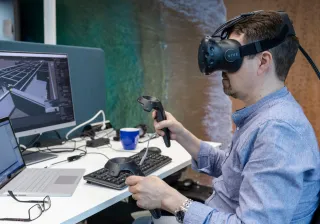The current artificial intelligence (AI) summer seems to go on and on. The topic gets a lot of media attention, also in the mainstream news. AI is being applied across industries and business domains. This is understandable, since it rides the digitalization wave. And digitalization, as we know, is already everywhere in our society.
It is important to keep in mind, however, that industries have different requirements when it comes to things like privacy and operating reliability. An error made by a music or film recommendation algorithm does not have as fatal consequences as an error in determining the details of an insurance or home mortgage. Healthcare has particularly high requirement levels, since it literally deals with life and death situations.
Healthcare is also extremely complex as a business domain. First of all, health data is diverse and lacks universally adopted standards and. Data is typically individual: a particular resting heart rate can be normal for me but too high for you. Secondly, interpreting the data often has subjective (expertise-based) components. This makes training algorithms to give ‘correct outputs’ quite complex. It can be difficult to set objective indicators and limits. For example, how to capture the concept of pain experience into a simple numeric value? What is the unit of depression or stress? Third, the operating environment is very challenging. Hospitals have their own data bases and structures, and often there are no APIs for sharing data between them. Furthermore, doctors can represent various schools of thought in their interpretations and diagnoses.
We don’t want to outsource the diagnostic decision making to a computer program, no matter how smart it is. Rather than replacing doctors and other healthcare professionals, AI programs are designed to support their activities, in particular perform routine tasks. This way the professionals can spend their time doing the things they have been educated to do.
An example of a routine task is the act of producing an epicrisis. Instead of manually writing down a dictation, speech recognition and natural language processing (NLP) algorithms can be utilized. This also enables to transform the dictation into structured information which can be used efficiently as the treatment continues. Another use case is the interaction between a patient and the hospital before the actual doctor visit. A chatbot mimicking human communication can take care of scheduling the visit and collecting basic information of the patient.
Finland has a lot of potential in developing and applying AI in healthcare. There are six central areas, where AI has a lot to offer. Of these, Finland is already doing world-class job in the following three:
- Personalised and precision medicine utilizing biobanks and genetic information resources
- Strong know-how in automatic data analysis and signal processing
- Continuous citizen-centric care, motivating people to make choices which are good for their health
Besides these, there are three other areas which can generate significant cost savings and streamline healthcare processes:
- Automating routine tasks, enabled for example by the aforementioned chatbots and NLP
- Process automation with AI. For example employee and resource allocations in a big hospital can be intelligently planned to cope with dynamically updating patient needs
- Aiding in policy decision making and scenario work. For example simulating the broader impact of a hospital expansion or declaring bike helmets mandatory would help to understand the potential effects and lead to a well-informed and objective conclusion.
Finland is a small country so it makes sense to focus the efforts on a limited number of important application areas. For example NLP technologies and chatbots are already put forward by companies like Google, Amazon, and IBM. It is wiser to build on top of these existing technologies rather than start competing with such tech giants. There is still plenty of room for new innovation.



